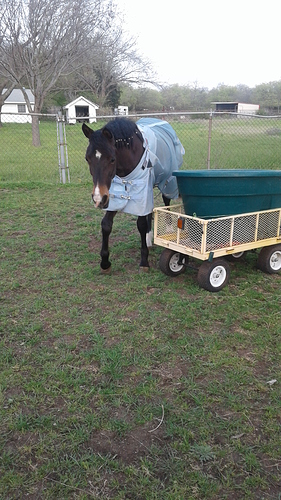Apparently this was last discussed in Oct 2013, so I think I’ll give it a go again. The weather was so bad this year that for the first time in 35 years, I’ve not been able to get local hay. Luckily I’ve been getting some nice Canadian hay in 45-50 lb square bales. But the flakes are about the size of two of my usual hay and packed terrifically tightly. This isn’t a problem when feeding hay in the stalls overnight: we just adjust what we dish out. But I feed out breakfast and lunch to the horses in the paddocks to supplement the dormant winter grass. The big flakes are just too big and the wastage is dreadful.
I’ve been trying to tear the flakes apart, but that really doesn’t work and the wind just blows most of it away. I got creative (aka desperate) today and actually used an old saw to try to cut the darn thing in half. It sort of worked, but not optimal. If that becomes my only choice, I’ll really have incredible biceps.
Any ideas?

